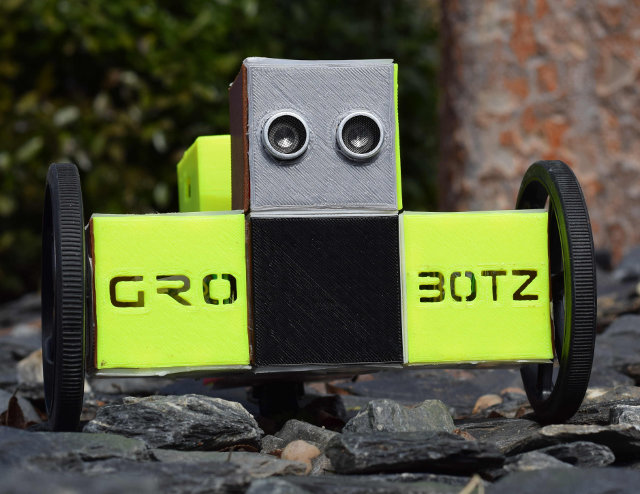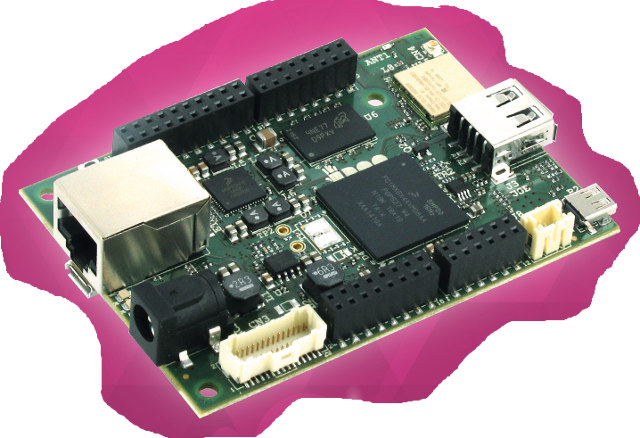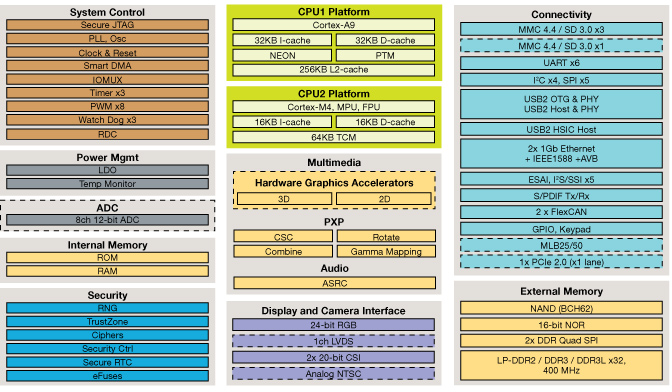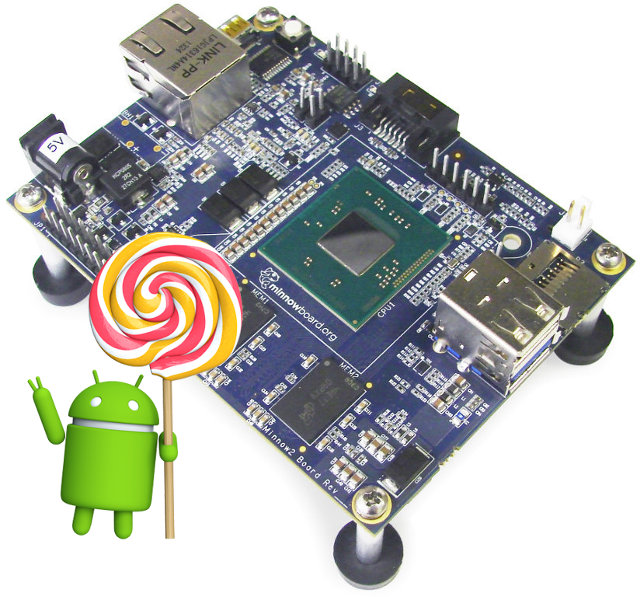Linaro 15.02 has just been released with Linux 3.19 (baseline), Linux 3.10.68 and 3.14.34 (LSK), Android 5.0.2, and Ubuntu Linaro Utopic. Listed changes for Linux Linaro are exactly the same as last month, except they’ve used Linux 3.9 release. Power management tools have been added to their AOSP build, and some work has been done for Android 5.0 on the new Hikey board. Here are the highlights of this release: Linux Linaro 3.19-2015.02 GATOR topic: version 5.20.1 updated integration-linaro-vexpress64 topic by ARM LT (FVP Base and Foundation models, and Juno support) updated topic from Qualcomm LT (ifc6410 board support) updated topic from HiSilicon LT (Hi36xx, HiP04, and X5HD2 families support) updated LLVM topic (the community llvmlinux-latest branch) included ILP32 patch set v3 rebased onto 3.19. Initial tests using syscalls LTP tests done. When using ILP32 userland, a few tests have to be skipped (msgctl07, msgrcv0[1-7], msgsnd01) to avoid the stalls, […]
Console OS Developer Preview Image Released for Some Intel Haswell and Bay Trail Systems
Console OS is an operating system based on Android that’s designed to run on x86 machines side-by-side with Windows and with desktop-friendly user interface. The project has been funded via a Kickstarter campaign, so backers get the updates earlier, but the developers have now publicly released Console OS DR1 (Developer Release 1) based on Android 4.4.2 so that more people can download it and try it for free after registration. I wanted to try it on Mele PCG03, but it failed, even after copying bootia32.efi to /EFI/BOOT directory (I get stuck into Grub command line), and I found out that “Systems must have 64-bit UEFI firmware. Some systems have 32-bit UEFI firmware, and we are working on adding support for those provided you have one of the processors above”. So it won’t work on cheap Windows 8.1 dongles and mini PC like MeegoPad T01 or Pipo X7, but MINIX NEO […]
GroBotz Interactive Robot Project is Made of Easy to Assemble Smart Blocks (Crowdfunding)
GroBotz makes me think of Lego applied to robotics. The project consists of modules such as motors, sensors, buttons, switches, or cameras that snap together in order to create a robot on wheels, games, toys, a musical instrument, or whatever idea you may have, and the hardware is then programmed using a graphical user interface. A Raspberry Pi board is used for the brain of the robot, and Microchip PIC MCUs for the smart blocks. The software is programmed in C# using Xamarin, the user interface is based on Unity, OpenCV is used for image processing, and during development a plastic part where printed with Makerbot, and schematics and PCB layout designed with CadSoft EAGLE. The company has now come up with a number of modules as shown in the picture below. Your robot can then be controlled over Wi-Fi with GroBotz app which works on Windows, Mac OS, iOs, […]
UDOO Neo Development Board is Powered by Freescale i.MX 6SoloX Processor
UDOO boards combine a Freescale i.MX6 dual or quad core processor with an external Atmel SAM3X MCU that’s programmable as an Arduino board, so as Freescale has now formally announced their i.MX 6SoloX processor with a Cortex A9 core running Linux and Android, and a Cortex M4 core running MQX real-time operating systems, it was logical that the company would soon launch a low cost development board based on this heterogeneous processor. Meet UDOO Neo. UDOO Neo board specifications: SoC – Freescale i.MX 6SoloX ARM Cortex-A9 core @ 1GHz and ARM Cortex-M4 Core with 2D/3D GPU System Memory – 512MB or 1GB DDR3 (only Plus version) Storage – On-board NOR SPI Flash, micro SD slot, 8-bit SDIO interface (on headers) Video Input/Output micro HDMI port LVDS interface + touch (I2C signals) Analog camera connection supporting NTSC and PAL 8-bit Parallel camera interface (on headers) Audio – HDMI USB – 1x […]
Freescale Announces i.MX 6SoloX ARM Cortex A9 & Cortex M4 Processor
Freescale i.MX6 SoloX processor started to show up in the ARM Linux Kernel mailing list last year, and Cortex A9 + Cortex M4 processor showed up in some marketing documents, but so far all documentation was tied to a non-diclosure agreement. However, all resources are now publicly available, as the company officially launched i.MX 6SoloX processor at Embedded World 2015. Freescale i.MX 6SoloX specifications: CPU – ARM Cortex-A9 up to 1 GHz with 512 KB L2 cache, 32 KB instruction and data caches and NEON SIMD media accelerator MCU – ARM Cortex-M4 up to 200 MHz with 16 KB instruction and data caches, 64 KB TCM, MPU and FPU Memory Interface 16/32-bit DDR3-800 and DDR3L-800, 16/32-bit LPDDR2-800 SLC/MLC NAND, 62-bit ECC, ONFI2.2 2x DDR Quad SPI NOR flash, 16/32-bit NOR Flash Display and Camera Interfaces Parallel RGB LVDS 20-bit parallel CMOS sensor interface NTSC/PAL analog video input interface Multimedia GPU […]
Pebble Time is the Color Version of the Pebble SmartWatch (Crowdfunding)
The original Pebble Watch launched on Kickstarter about 3 years ago, and after selling over 1 million watches, the company is back on Kickstarter with Pebble Time, a thinner version of the watch with an always-on color e-Paper display, a new “timeline” user interface, a microphone for voice recognition, and 7 days of battery life. The complete Pebble Time specifications are not available, but the company still listed some key features: MCU – Cortex M4 Always-on, daylight readable 64 colors e-Paper display with backlight (no touchscreen) Six-axis gyrosope Microphone for dictation 3x tactile buttons Bluetooth for connectivity with mobile devices Up to 7 day battery life Compatible with any standard 22mm watch band Water resistant and durable Silent vibrating alarms Language and international character support (Chinese coming soon) The new Timeline interface focuses on past, present and future events such as basketball score, current steps, and weather forecast, and the […]
Android 5.0 Binary and Source Code Release for Minnowboard MAX
Yet another development board gets a Lollipop update with Minnowboard MAX powered by Intel Atom E3815 or E3825 Bay Trail-I processor. Intel’s android-5.0.1_r1-ia0 release uses a 64 bit kernel and a 32 bit userspace, and supports all on-board peripherals such as Ethernet, HDMI (digital Audio + Video), USB host, SATA, I2C+SPI, GPIO, PWM and UART. New features and improvements features for this release include: Digital audio support using HDMI and USB. Linux console on serial port for debugging purposes. Android can be installed on SDCard, USB Stick or SSD. Android Runtime (ART). Material Design UI. Bluetooth 4.0 support using an external USB dongle. SELinux runs in enforcing mode. User data is encrypted by default. Bug fix – GPIO support The image is intended for developers interested in working with Android 5.0 on MinnowBoard MAX, but it does not have all the components to meet Android Compatibility requirements. If you own […]
Beam Android Projector Fits into Any Light Socket (Crowdfunding)
Four years ago, Seco showcased a prototype of a light bulb integrating a picoprojector and running Android, so you could fit it on the socket on your ceiling or compatible lamp. Now a company is planning to launch an Android projector that fits into E27, E26, or Bayonet light sockets called Beam. Beam projector specifications: SoC – Dual core processor @ 1.3GHz System Memory – N/A (1GB?) Storage – 8GB storage Projector LED pico projector; Currently 854×480 resolution, but it may be upgraded before the product ships ANSI 100 lumens 20,000 projection hours Max projection size – 120″ widescreen Throw ratop – 1.6:1 meaning at 1.8m, the project size will be 1.1m. Lamp function: 12 LED lights Audio – 2W stereo speakers Connectivity – 802.11 b/g/n Wi-Fi, Bluetooth 4.0 Light socket – E26, E27, or Bayonet via included adapter Power Supply – 110VAC to 240VAC Dimensions – N/A The version […]










